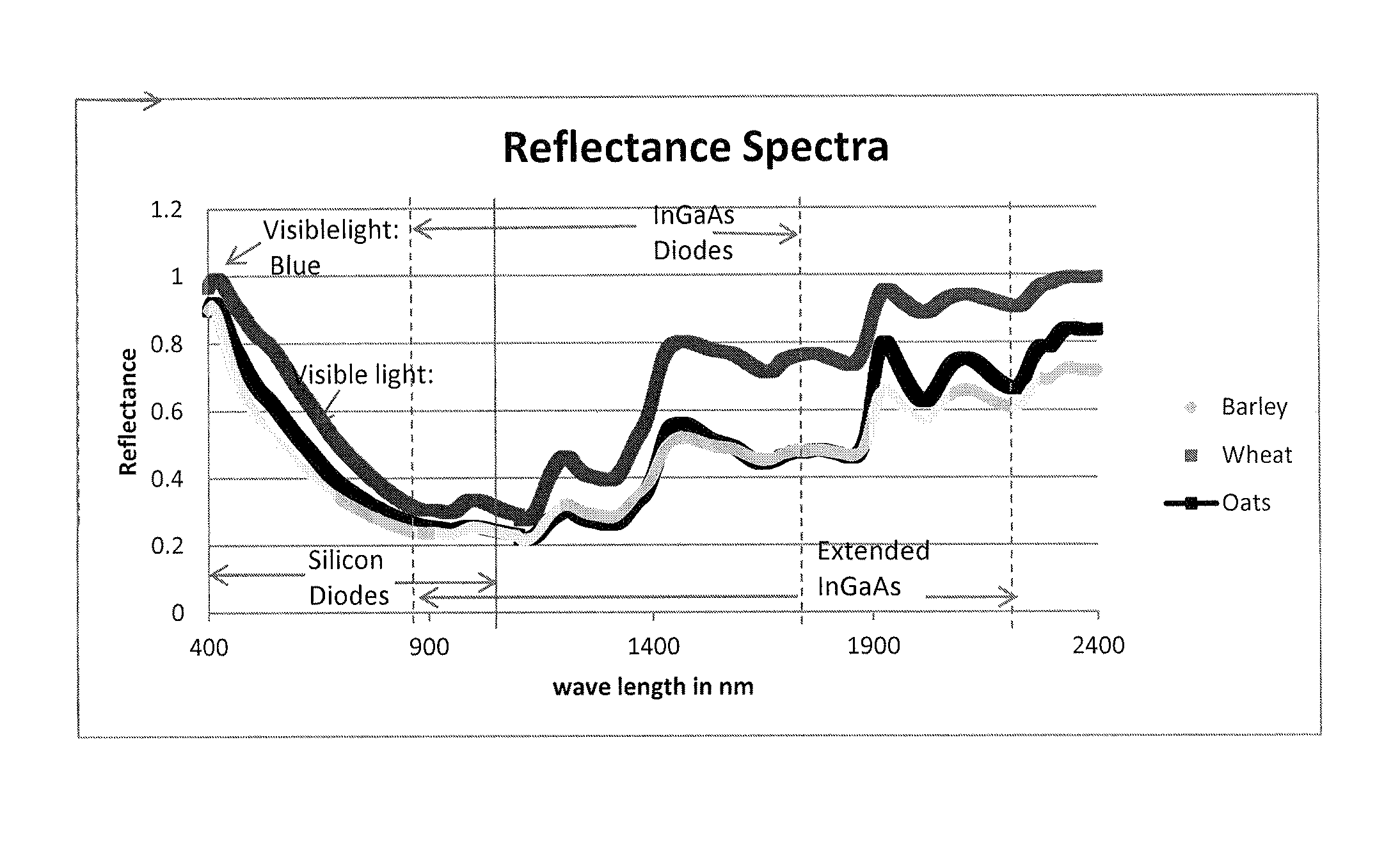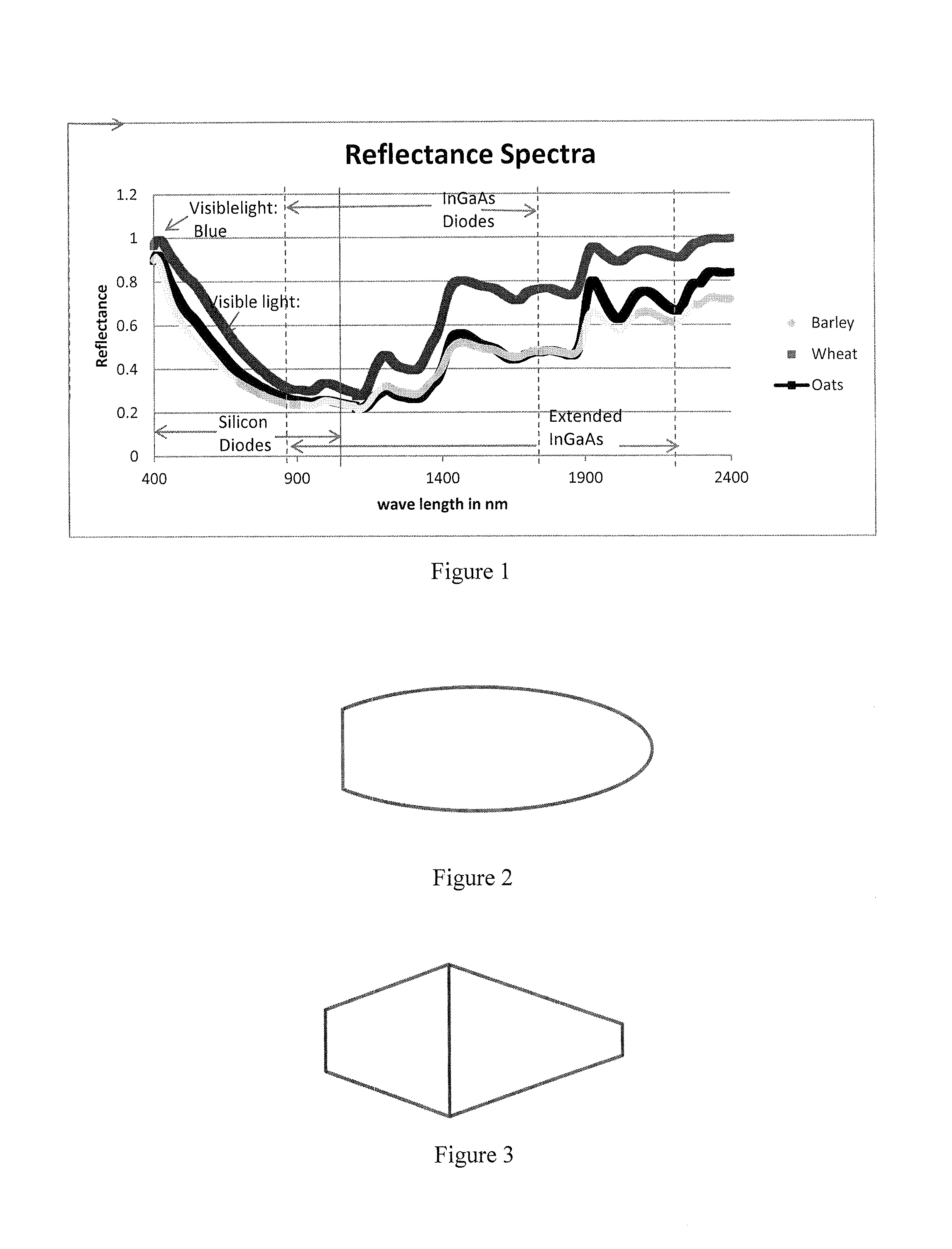Method of producing gluten free oats
a technology of oats and grains, applied in the field of grain sorting, can solve the problems of oats cultivated, limiting consumption of gluten-containing foreign grains, and oats cultivated in europe and even other parts of the world are commonly contaminated by gluten-containing foreign grains, etc., to enhance the sorting purity and yield, and accurately distinguish oats from contaminant grains.
- Summary
- Abstract
- Description
- Claims
- Application Information
AI Technical Summary
Benefits of technology
Problems solved by technology
Method used
Image
Examples
example ii
B. Sorting Example II
[0021]In the above oat sorting example, the reflectance spectrum of grains and the ability to use linear discriminant analysis is employed to distinguish oats form other grains. Although it is set forth that the spectral information at wavelengths over 1680 nm can be used to sort seeds, the cameras needed to collect data at those wavelengths are significantly more expensive than standard InGaAs cameras operating from 1000 to 1680 nm. Therefore, there is certainly advantages to focus on the spectral features centered on 1020 nm, 1130 nm, 1220 nm, 1320 nm, 1475 nm and 1680 nm.
[0022]In connection with this example, a sample set of 500 barley seeds and 500 oats was prepared by measuring the top and bottom of each seed on a Buchi 500. The bottom of the seed was established as the crease side of the barley and the side of the oat where the outermost layer of hull is split. The wavelengths listed above were found by taking first derivatives of the spectra and looking f...
PUM
 Login to View More
Login to View More Abstract
Description
Claims
Application Information
 Login to View More
Login to View More - R&D
- Intellectual Property
- Life Sciences
- Materials
- Tech Scout
- Unparalleled Data Quality
- Higher Quality Content
- 60% Fewer Hallucinations
Browse by: Latest US Patents, China's latest patents, Technical Efficacy Thesaurus, Application Domain, Technology Topic, Popular Technical Reports.
© 2025 PatSnap. All rights reserved.Legal|Privacy policy|Modern Slavery Act Transparency Statement|Sitemap|About US| Contact US: help@patsnap.com


